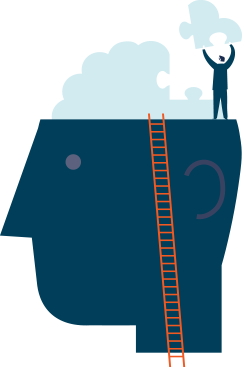For references to the studies discussed in this info sheet, see the reference list.

What are GHB, ketamine and Rohypnol?
GHB1, ketamine and Rohypnol2 are psychoactive (mind-altering) substances that affect how we think and behave. GHB and Rohypnol are depressants that slow heart rate, breathing, thoughts, and actions. Ketamine is a hallucinogen that alters awareness, senses, and perceptions. It also increases heart rate and blood pressure.
Typically, these drugs are made in uncontrolled laboratories and situations. They come in various forms—pills, powder, or liquid. GHB and Rohypnol are usually swallowed. Ketamine is often snorted (e.g., sniffed through a straw) but sometimes people smoke or inject it, or add it to a drink.
1 gamma hydroxybutyrate
2 brand name of flunitrazepam
Why do we use these drugs?
While GHB, ketamine, and Rohypnol have medical uses, they can be used for pleasure, e.g. at a rave or other party. Some people use GHB (e.g. G, Easy Lay, cherry, liquid ecstasy, grievous bodily harm) or Rohypnol (a benzodiazepine, e.g., Flunitrazepam) to feel relaxed and sociable. Others use ketamine to experience unusual sensory perceptions. But like other drugs, they can be harmful.
Many people choose not to use GHB, ketamine or Rohypnol or use them in moderation, as being less in control of their body and behaviour increases the likelihood of accidents or making unwise choices such as having unsafe sex. Using these drugs may help you feel more outgoing at a party, but repeatedly using these substances to address social anxiety may lead to harms to your health or relationships.
GHB and Rohypnol are also known as 'date rape' drugs. They are generally odourless, tasteless, and colourless. They may be mixed into a drink and consumed without an individual's awareness. Effects can include making a person very relaxed, more compliant, or render them unconscious. Combined with easy access, these drugs are a common choice for use in this way.
What happens when we use these drugs?
When swallowed, GHB and Rohypnol are absorbed into the bloodstream through the small intestine and stomach. When snorted, ketamine is absorbed into the bloodstream through the membranes in the nose, and when injected, goes directly into the bloodstream. Once there, the drugs travel to the brain.
GHB, ketamine and Rohypnol affect naturally occurring chemicals in the brain that play a role in regulating mood, energy, and the way we experience the world. It is important to remember that these drugs have different effects on different people. Some people may feel happy and relaxed while others may feel anxious and restless. Some factors that influence how GHB, ketamine or Rohypnol can affect you include your
-
past experiences with the drug,
-
present mood and surroundings, and
-
mental and physical health condition.
Impact on well-being
Using GHB, ketamine or Rohypnol is risky because you may not know for sure what you are putting in your body. Because the drugs are often made or distributed in uncontrolled conditions, it is hard to know what is mixed with them. The people selling the drugs may say they are offering one kind of drug but supplying another. If you have access to a drug checking service, consider having your drugs tested before you use them.
Small amounts of GHB or Rohypnol may help you feel more confident when socializing. More than this can increase the likelihood of other effects including drowsiness or potentially, coma. Some people use ketamine because they like how it makes them feel detached from their body and environment. However, being unaware of what is going on around you may put you at risk of injuries from falls and other accidents or more vulnerable in unfamiliar social situations.
Regular use of ketamine over time has been linked with urinary and bladder problems. Drug-induced comas increase risk of negative effects on the brain, especially the still developing brains of those under 25.
Signs of overdose
Using GHB or Rohypnol involves a risk of overdose. How much and how often we use affects our degree of risk. Since you may not know the purity and content of the drug, you can accidentally use too much. GHB and Rohypnol slow down heart rate and breathing. Signs of overdose include:
-
slow or no breathing
-
slow or no pulse
-
pale, cool skin
-
vomiting
If someone you know is showing signs of overdose, call 911 right away. Remain with the person. Try to wake them up. If they do not regain consciousness, roll them onto their side into the recovery position to avoid choking if they throw up.
When is using GHB, ketamine or Rohypnol a problem?
Using GHB, ketamine, or Rohypnol is a problem when it negatively affects our life or the lives of others. Many of us may think this refers only to people who regularly use large amounts, but even a single occasion of use can lead to a problem. For instance, we may make a poor decision that results in problems with relationships or the law. It is important to recognize the potential for adverse consequences of use in any context and over time.
Drug use, especially regular use, by young people has particular risks. Like other psychoactive drugs, GHB, ketamine or Rohypnol can interfere with normal brain development. Early use can also interfere with developing normal patterns of social interaction with peers and have a negative impact on well-being.
Tolerance is one consequence of regular use that can develop. This happens when it takes more of the drug to achieve positive effects. If you use GHB or Rohypnol regularly, you are also at risk of dependence. This means feeling like you need the drug to function and feel normal. While most people who use ketamine do not experience an issue, those who use the drug frequently over a period may be putting themselves at increased risk of dependence.
The reasons people use drugs influence their risk of developing problems. For instance, if a person uses a drug out of curiosity, only occasional or experimental use may follow. But when a person uses a drug to cope with a long-term problem such as social anxiety, then more long lasting and intense use may follow.
People who develop a dependence on GHB or Rohypnol may experience signs of withdrawal, including anxiety, nausea, headaches, and disturbed sleep if they lower the amount or frequency of their use of the drug. Seeking assistance from a healthcare professional if you experience these symptoms or other effects that bother you, can be helpful.
Mixing GHB, ketamine or Rohypnol with other substances
People sometimes mix one drug with another to experience different feelings or to offset the effects of one drug with another. For instance, a person may use a depressant such as Rohypnol to help them relax and rest after using a stimulant such as cocaine. But combining substances is risky as they can interact in unexpected ways. The following are some common combinations and possible results.
Alcohol and other depressants
These substances slow heart rate and make us feel more relaxed. The effects can be greater when combined with other drugs in the same category. For instance, combining GHB with alcohol can increase the risk of overdose.
Stimulants
These substances increase heart rate. Combining depressants such as Rohypnol with stimulants such as cocaine may cloud judgment about how intoxicated we are, potentially leading to risky decisions such as driving a vehicle.
Cannabis
Combining cannabis with GHB, ketamine or Rohypnol may mask the effects of each drug. This may lessen control over behaviour, increasing the chances we may take risks that result in problems.
Medications
When prescription or over-the-counter medications are used with GHB, ketamine or Rohypnol, there is the potential for negative side effects or for the medicinal benefits to cancel out. Taking the time to read medication labels or consulting with a healthcare professional such as a pharmacist, can reduce these risks.
How to make healthier choices about GHB, ketamine or Rohypnol
If you choose to use GHB, ketamine or Rohypnol, it is helpful to know the steps to take to ensure that your use is the least harmful possible. The following are some useful guidelines to follow.
Not too much. Managing the amount you use in a given period can help to decrease negative effects.
Tip: Buy less so you use less and set a limit on how much you use at one time.
Not too often. Limiting how frequently you use a substance helps reduce harms to ourselves and others over time.
Tip: Think about when you are likely to use a drug and then try to break the pattern by consciously planning other activities (e.g., go to the gym or a movie with a friend).
Only in safe contexts. Making informed choices about where and with whom you use GHB, ketamine or Rohypnol helps to minimize harms.
Tip: When going out, stay in the company of trusted friends. That way you have someone to ask for help if a situation happens that feels unsafe or in case you get injured.
Are GHB, ketamine and Rohypnol legal?
GHB, ketamine and Rohypnol are controlled substances in Canada. Ketamine is legally available for veterinary and medical use. GHB is legally available for medical use. It is illegal to make, sell, buy, or possess GHB, ketamine or Rohypnol. Individuals may receive a fine, prison term, and a criminal record that could affect their future employment, travel plans and educational opportunities.
What to do if you or someone you know wants to explore change
To better understand how substances play a role in your life, visit the You and Substance Use Workbook on the Here to Help website: www. heretohelp.bc.ca. This website also features detailed information on substance use and mental health.
You can also find information about a wide variety of substance use issues, including drug checking, on the Canadian Institute for Substance Use Research (CISUR) website: www.cisur.ca.
For information on treatment options and resources throughout BC, call the Alcohol and Drug Information and Referral Service at 1-800-663-1441. In Greater Vancouver, call 604-660-9382.
About the author

The Canadian Institute for Substance Use Research, formerly CARBC, is a member of the BC Partners for Mental Health and Substance Use Information. The institute is dedicated to the study of substance use in support of community-wide efforts aimed at providing all people with access to healthier lives, whether using substances or not. For more, visit www.cisur.ca.
